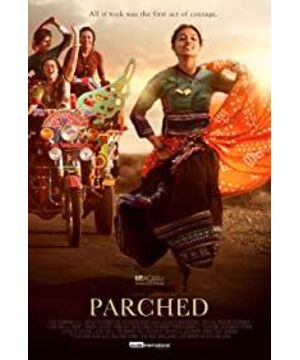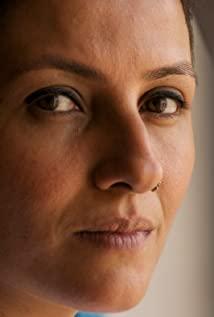On the 38th Festival, I watched this representative work of Indian feminist awakening [Hot]. The three women with similar backgrounds but different troubles in the film are the epitome of women at the bottom of India, showing the audience the decadent patriarchal culture in Indian society.
The film is a bit cliché in terms of content, with obvious conflicts and the Kishan couple who are regarded as hope by the audience, and there is no tortuous understanding process. But what impressed me about the film was the expression of Indian aesthetics in the film.
Director Lina Yadav expressed her view of the beauty of traditional Indian women and the beauty of humanity in the film. The beauty of women in the film is reflected in the excellent lighting design, mottled sunlight sprinkled on the traditional cabinets in Rani's home, and the unique and beautiful color matching of Indian clothing, the details of the characters' clothing in different plots, and even the female body curves. And the beauty of the skin, let the audience feel that this is an expression of beauty projected from the eyes of women. The director brought a lot of private goods during the shooting, and reflected his personal understanding of Indian aesthetics in all aspects.
Although the film reflects the serious problem of son preference in India, we can see the beauty of human nature expressed by the director, which lies in the sympathy and mutual support among the three women at the bottom, so that they can maintain optimism and actively cope with life in this desperate environment various hardships. Rani helped her daughter-in-law, who also came to her house as a child wife, to show her kindness that has not been wiped out by reality, and to understand and change another girl's life with a woman's tenderness. And the strange man who called Rani, made people feel the hope of fate, and became a light in Rani's dark life, adding a little expectation and hope to her depressing life. The various clips resonated with me, who is also a woman, and I was able to understand the various choices made by women in the film.
Indian movies have this magic, such as [The Millionaire in the Slum], [Wrestling Dad], [Little Lolita and Uncle Monkey God], everyone knows that this movie is going to tell a cliché and bloody story just by looking at the name. But the audience just bought it, and was moved by this cliché and real expression again and again. Indian film has found its own way. It not only expresses the aesthetics and culture of Indian culture through film, but also exposes the problems existing in the country's society. In the end, it will use an attitude of "bad students to reform themselves and start anew" to explain the country The awakening of various consciousnesses in the society can not help but let the audience and the international community feel the vibrant and progressive consciousness of the country of India, and feel that this country is full of hope, just like the name of the film, hot.
View more about Parched reviews











